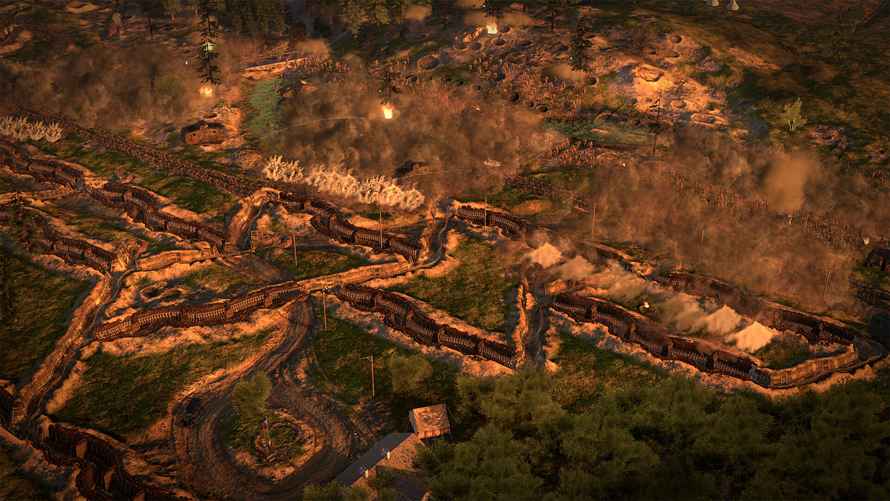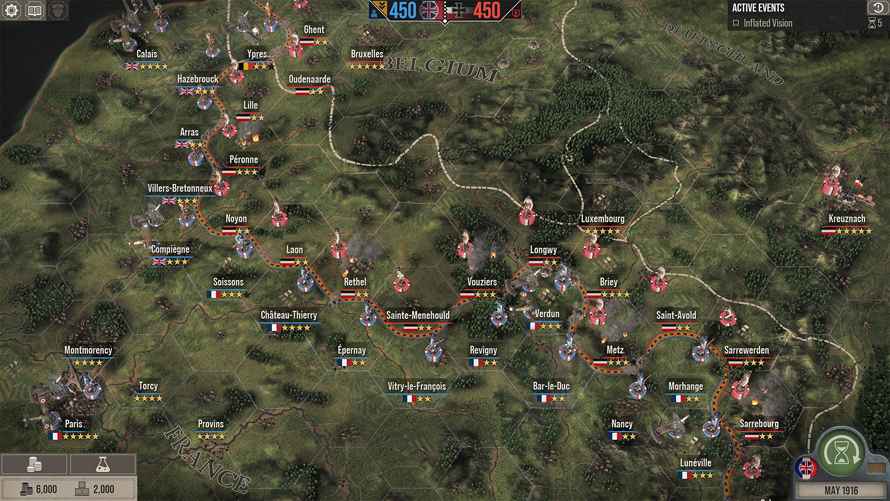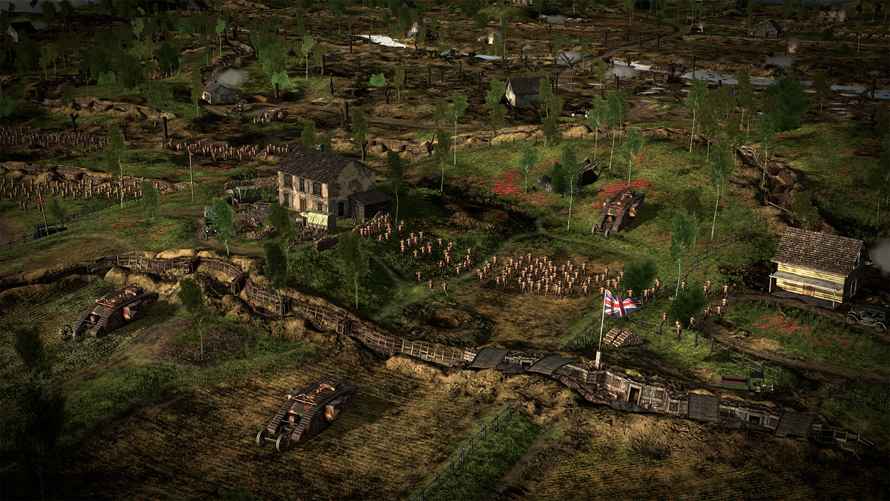The Great War: Western Front Preview
War is hell. It is also a terrifying and monumentally complex web of decisions. Choices that leaders make impact not only the moment-to-moment flow of battle, but resonate through the economic life and social fabric of a nation. Even small-scale wars leave psychic scars for generations. War changes history forever. The weight of decisions big and small clearly forms the core of Petroglyph‘s The Great War: Western Front. I had the opportunity to preview the game and came away both daunted and impressed.
The Big Picture First
The Great War: Western Front is a strategy game very much in the mold of titles like Total War, and in fact shares some similar mechanics. You play as both a Theatre Commander and Field Commander. As a Theatre Commander, you make top level decisions on an overworld map of the front lines. It’s a little like playing a game of chess against multiple opponents. Instead of pawns and rooks, you’re moving around various unit types, positioning spies and counterintelligence forces and making critical economic decisions.

Because the game is set during World War One, there are forces from multiple nations to consider. Each nation’s units have specific strengths and vulnerabilities. As anyone with an interest in military conflict knows, the Great War was a pivot point between 19th century tactics and a new style of warfare that included aircraft, artillery, tanks, bombers and spy balloons. Of course, trench warfare was still a major element in the war.
All of these unit types, their cost and positioning is part of the job of Theatre Commander. National morale plays a huge role in funding your forces. The multi-chapter tutorial only hinted at the underlying complexity of the Theatre Commander aspect of The Great War. Detail-oriented, grand strategy players will love it.
Down to Scale
While many battles can be auto-resolved, there are some encounters that need to be played out on the battlefield in real time, with the player in the role of Field Commander. This is where you get to get your hands good and dirty, and the micromanagers will feel at home.

Trench warfare is a major part of battles, and there are a number of trench types to consider. Some are basic and offer little protection. At the other end of the spectrum are hardened trenches that protect forces but can’t be fired out of. The rhythm of a battle in Western Front is building trenches and filling them with infantry, softening up enemy forces and then moving infantry out of the trenches, inching them forwards towards the objectives.
That’s a simplistic description of a very complex and multifaceted series of mechanics. While there are naturally many varieties of infantry, there are also different types of tanks, artillery, spy balloons and aircraft. Any or all of these weapons of war can be useful, depending on the terrain and makeup of the enemy forces. And of course, the Field Commander doesn’t have unlimited resources. All that firepower costs money, or in the lingo of The Great War, supply.
Choice Paralysis
Visually, the tactical map is absolutely packed with information, almost to the point of overkill. Add to that the tool tips, expandable UI elements, mission objectives and encyclopedia, and the Theatre Commander must be a tactician able to process a lot of detail. On the battlefield, things are a little easier to read. But here, too, there is a lot to keep track off. Even zoomed in, units — especially infantry — are very small. While real-time battle effects are well done, this isn’t a strategy game where individual units have unique animations or personality. At the battlefield level, the UI is every bit as complex as it is in the tactical map.

In a couple of hours with the game, I barely had time to reach the end of the tutorial. Of course, I was under the gun to move as quickly as possible. The Great War: Western Front is a game that will absolutely require a commitment of time, though experienced tactical wargamers might have an advantage on the learning curve. Even just scratching the surface, I appreciated the attention to detail and historical accuracy the developers have poured into the game. I look forward to blocking out some serious free time when the game releases later this year.
Thank you for keeping it locked on COGconnected.

